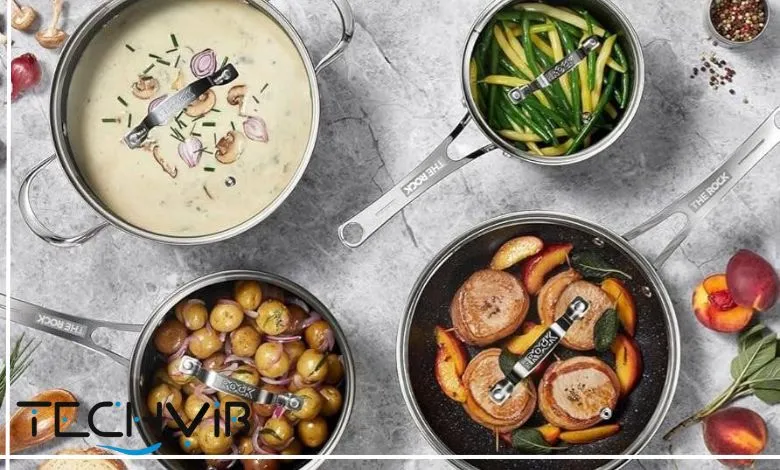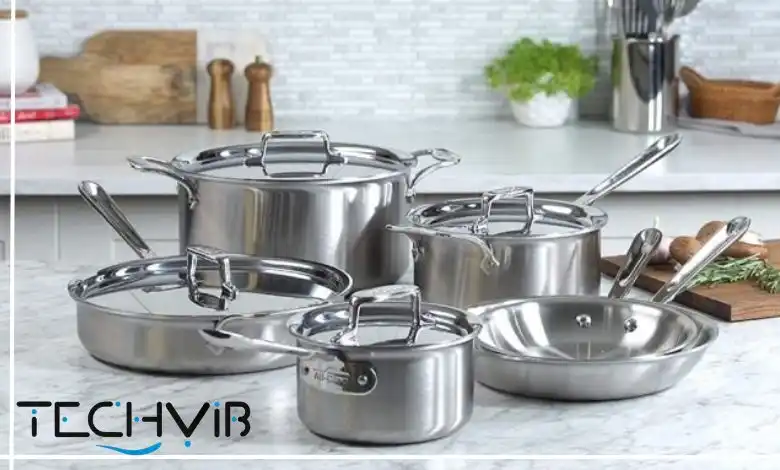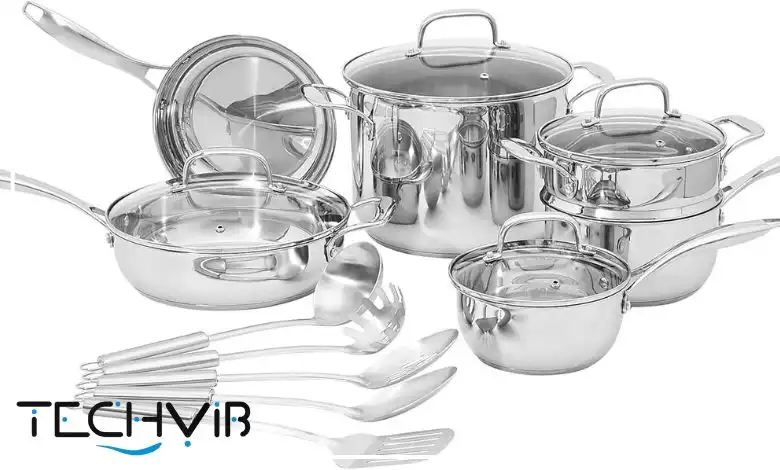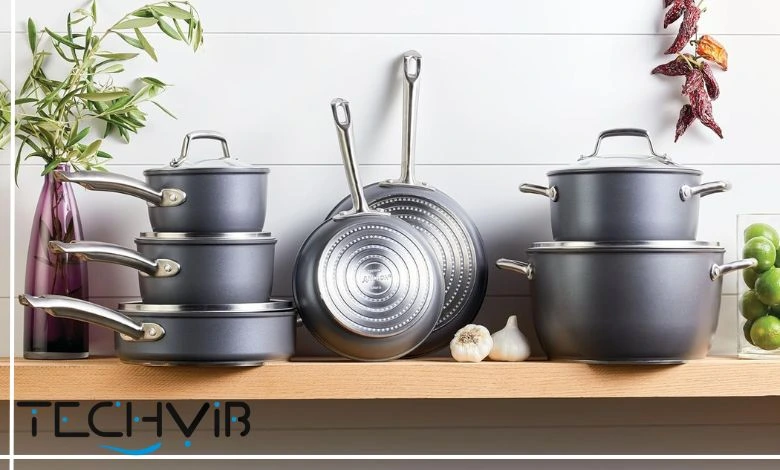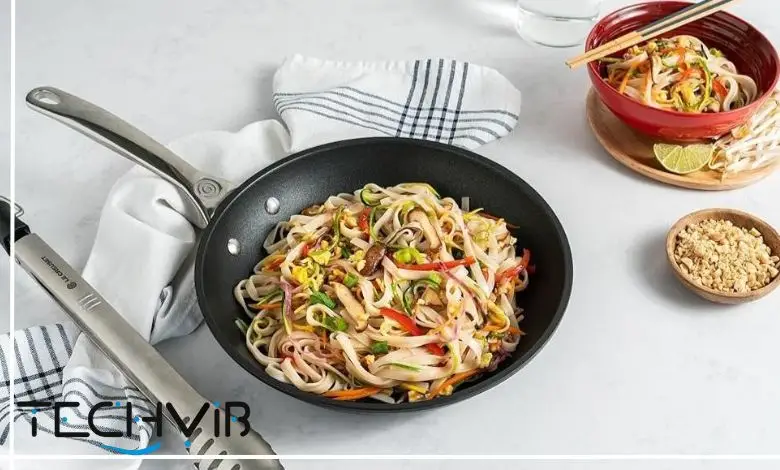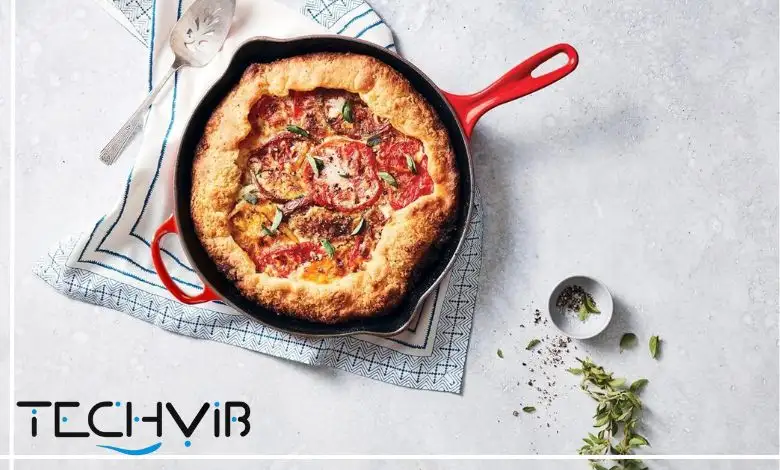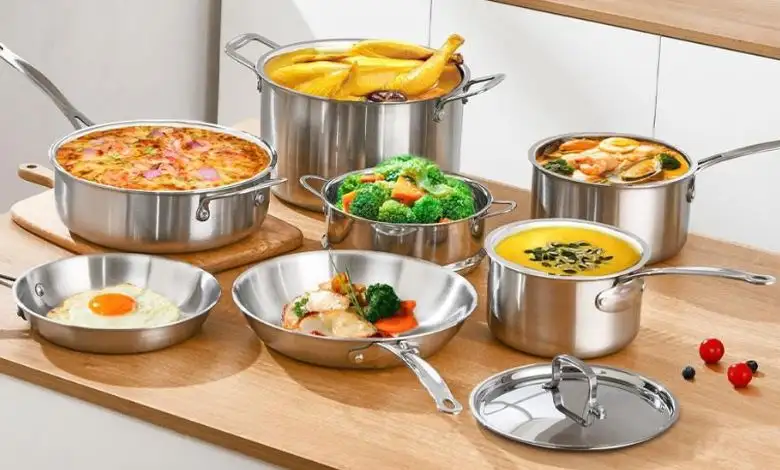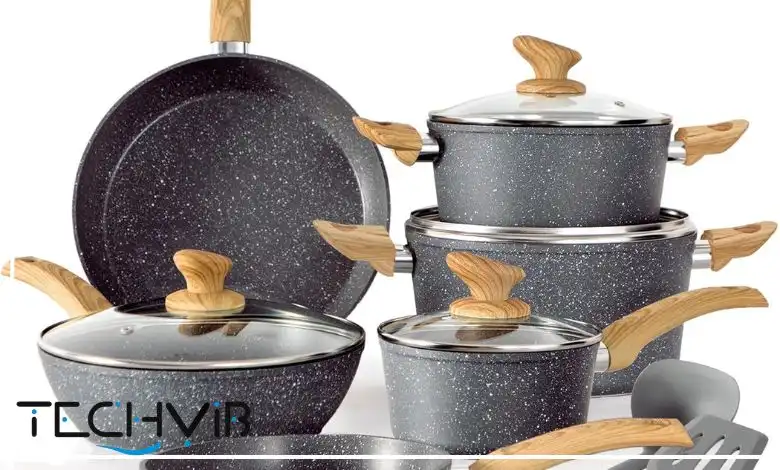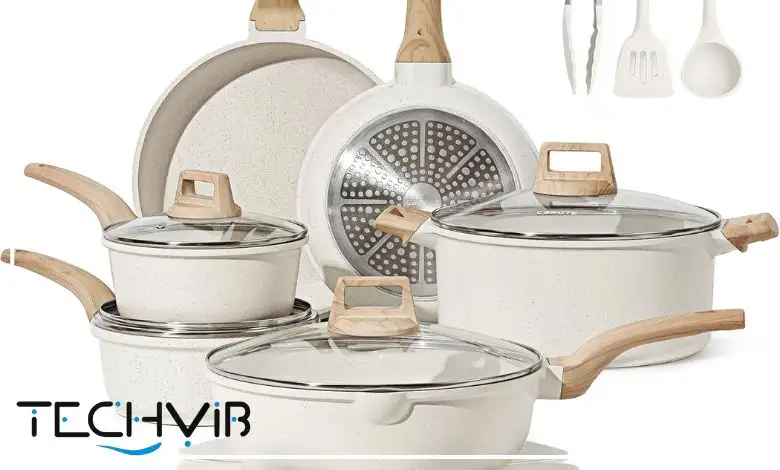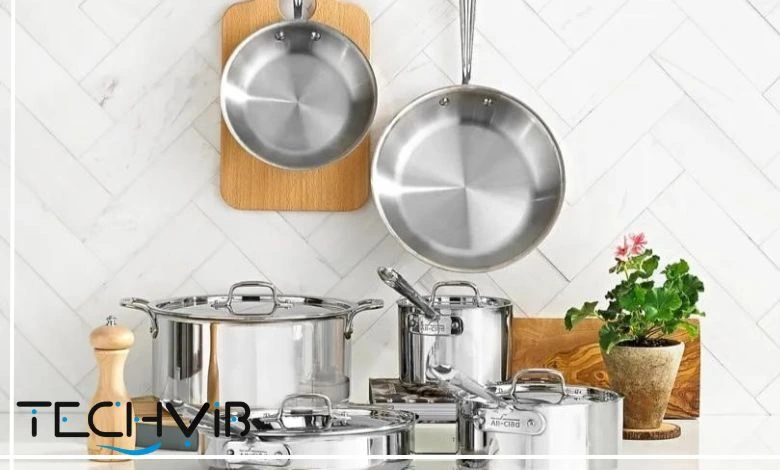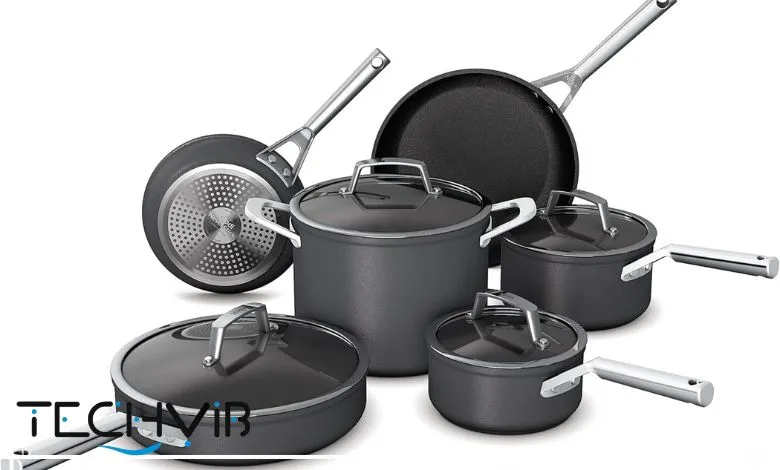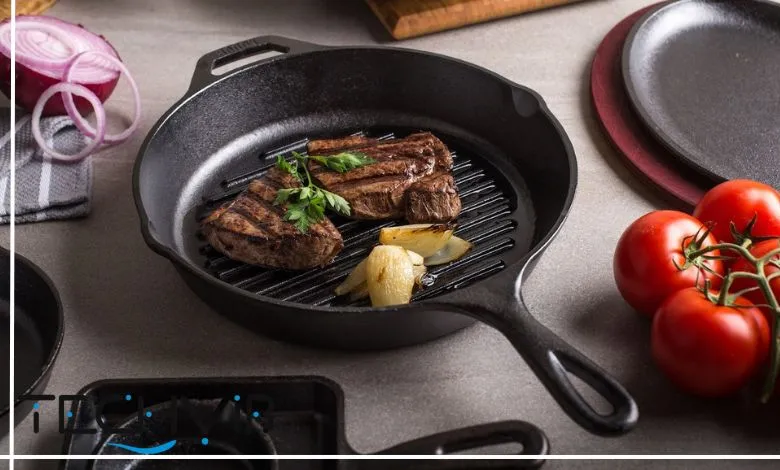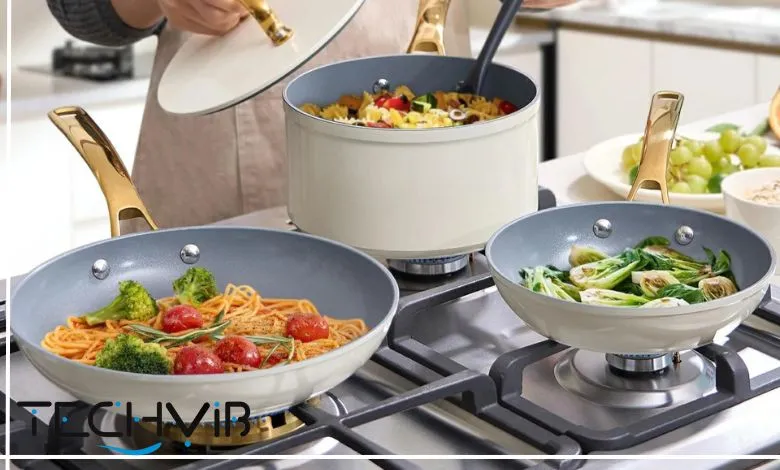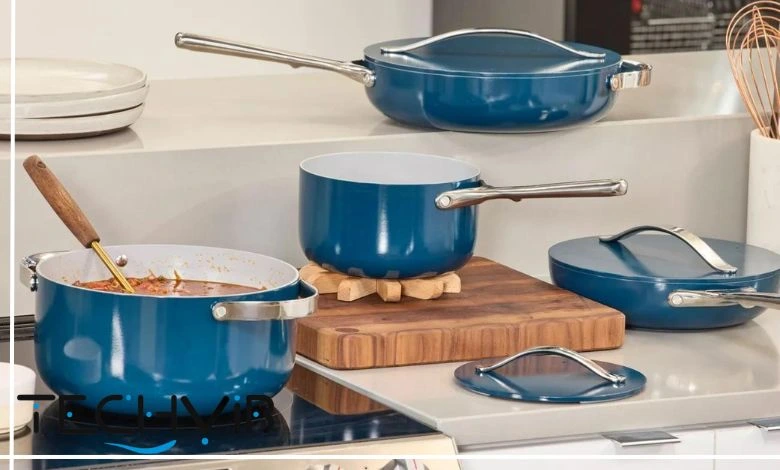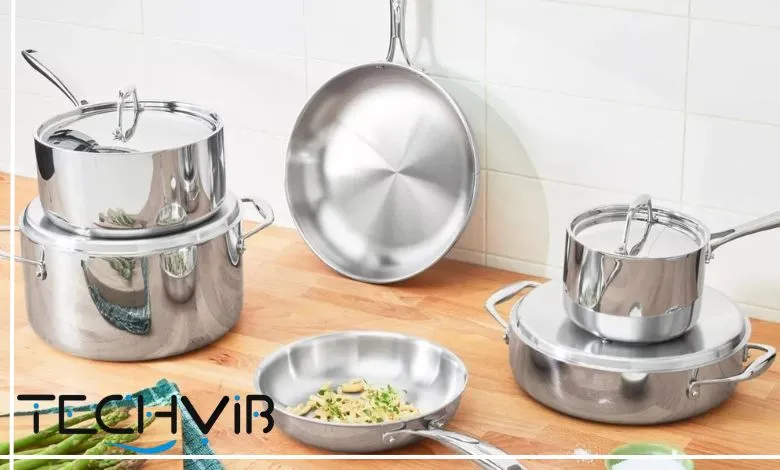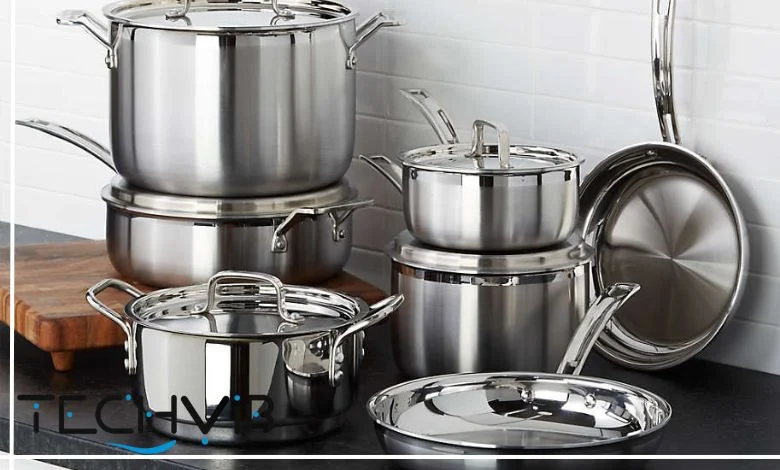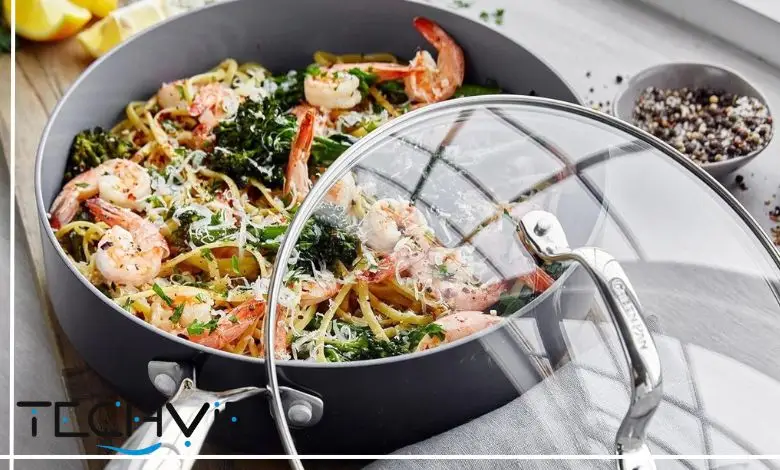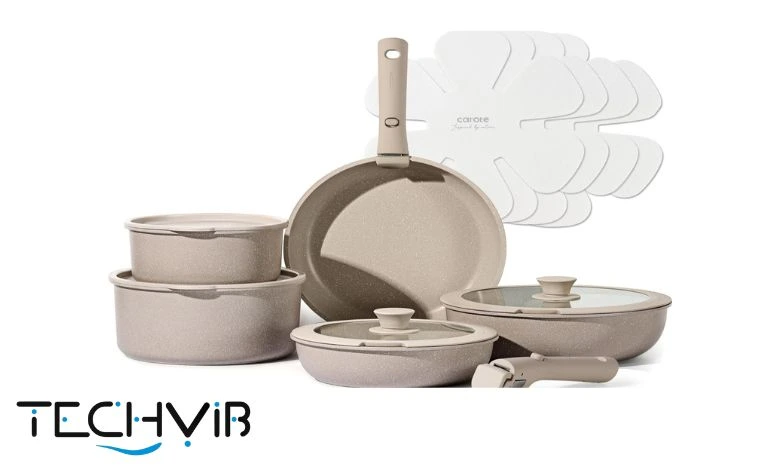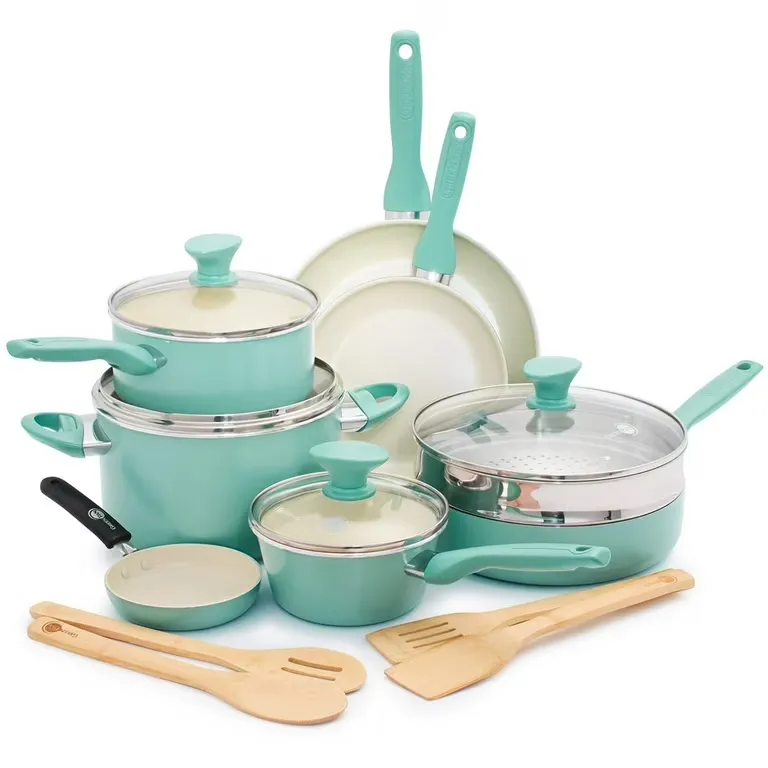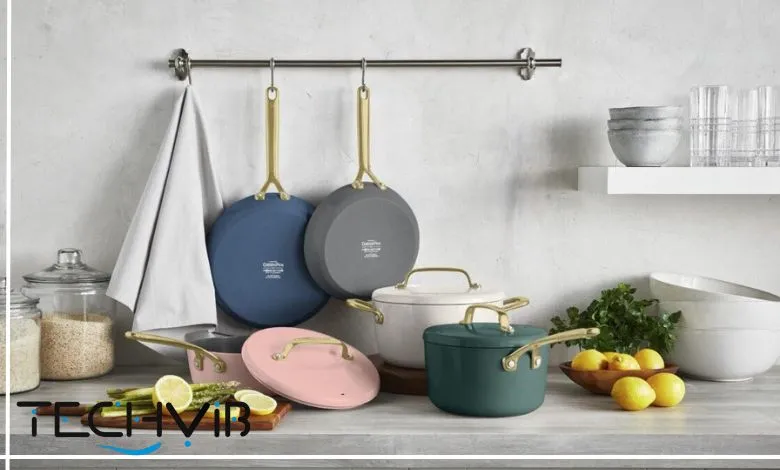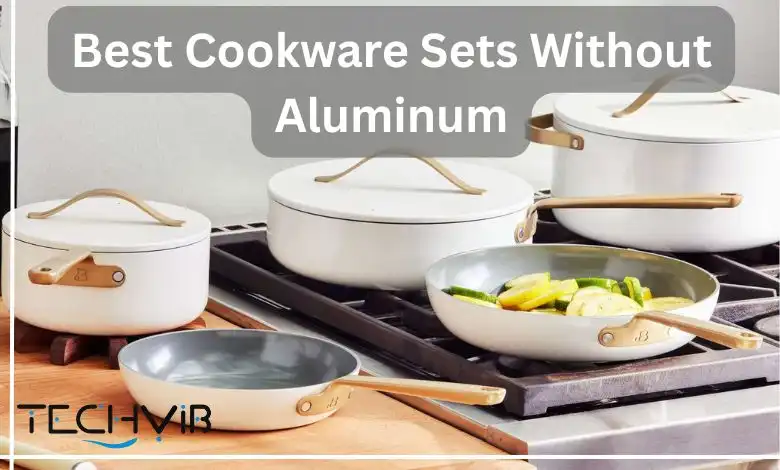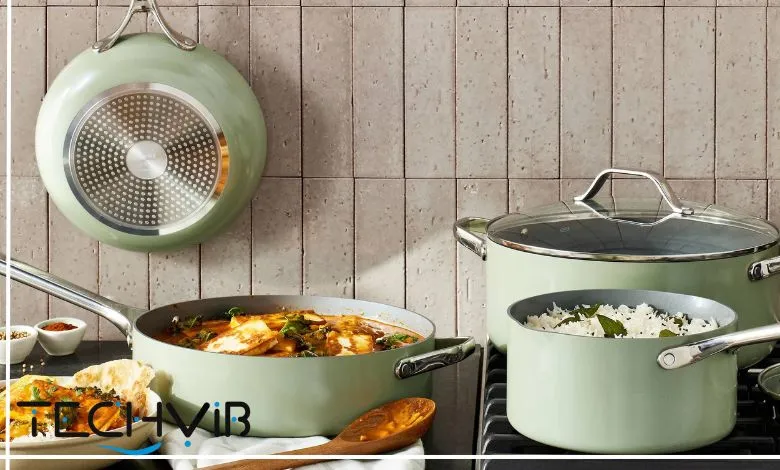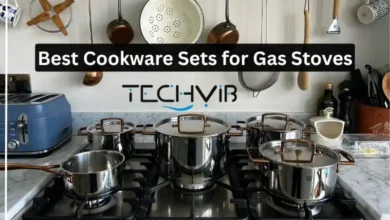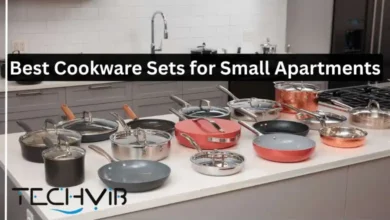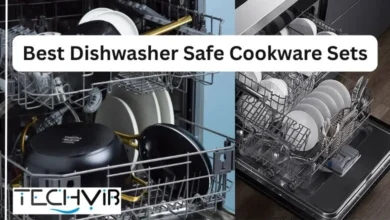Ceramic Versus Stainless Steel Cookware: Which One Is Better?
When deciding between stainless steel vs ceramic cookware, consider that each material brings distinct advantages and limitations to the kitchen. Ceramic stands out for its natural non-stick qualities that support healthier cooking with less oil. Stainless steel impresses with its unmatched strength and ability to handle intense heat for various techniques. Your selection should align with daily cooking routines, such as whether you prioritize ease of use or long-term reliability. No option is universally superior, as factors like budget and maintenance influence the choice. Continue through the article to gain a thorough understanding and make an informed decision.
Table of Contents
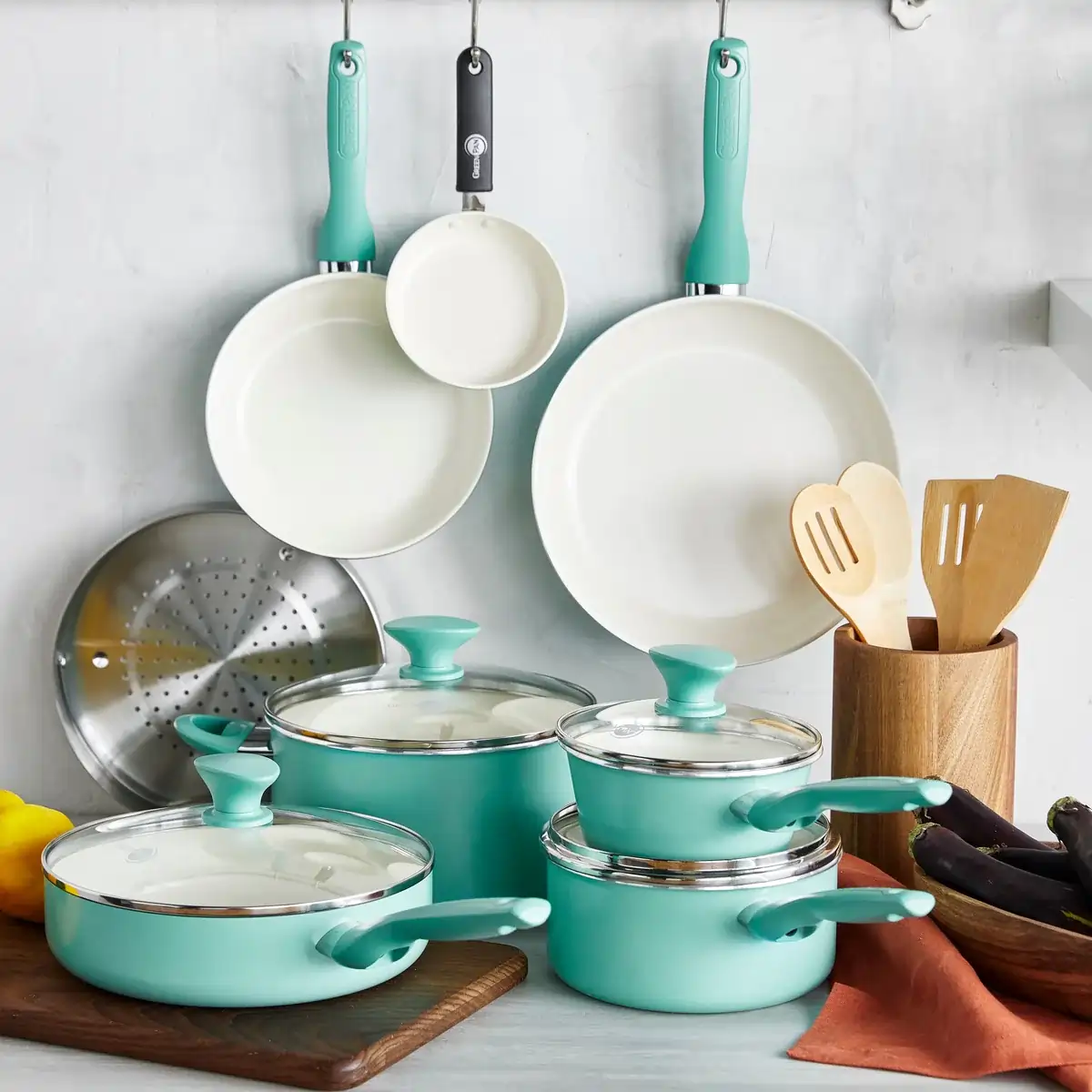
Durable nonstick ceramic surface designed for healthier cooking with less oil. Provides even heat distribution and scratch resistance while remaining free from PTFE and PFOA. Stylish, easy-to-clean design suitable for daily use in modern kitchens.
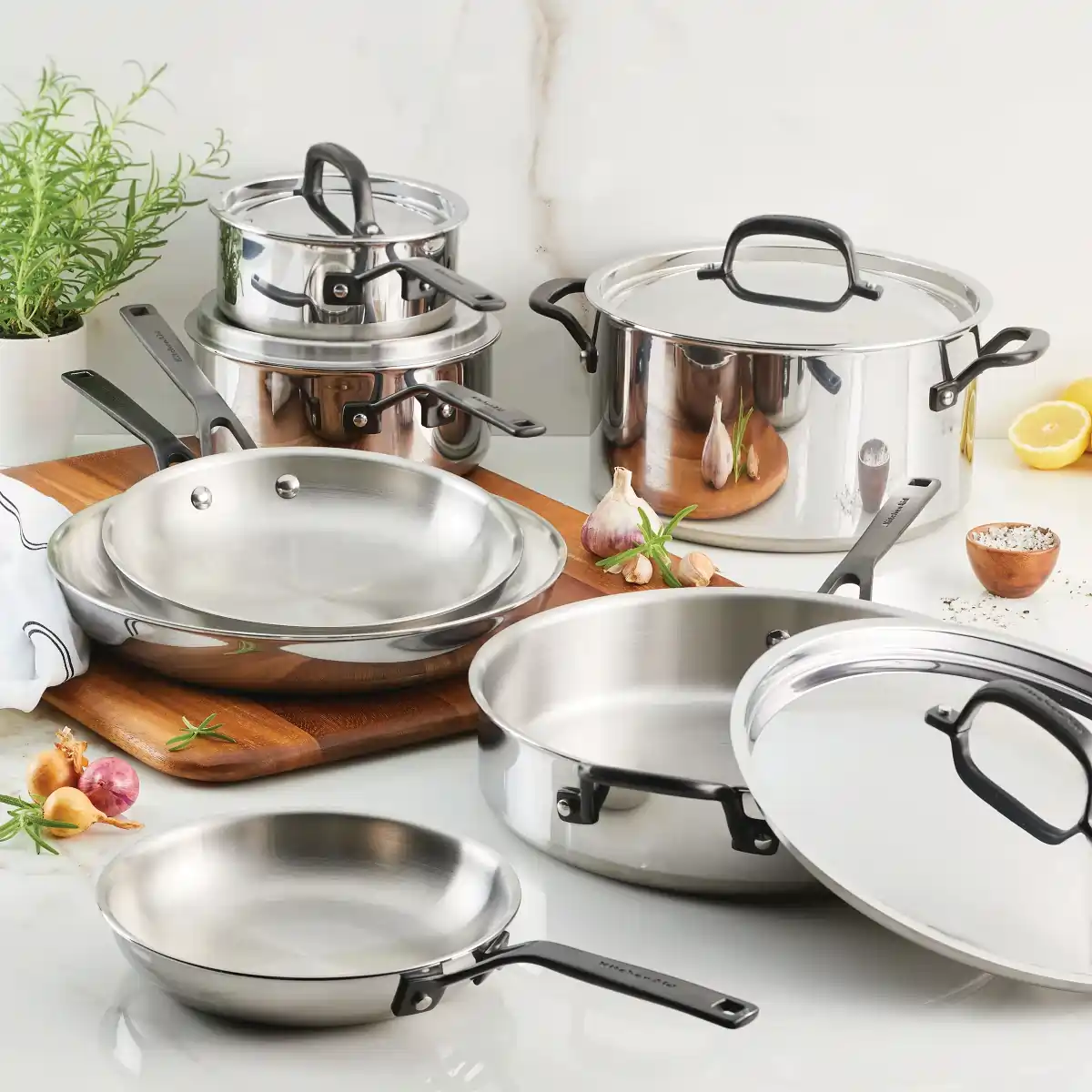
Durable stainless steel construction with excellent heat retention and even cooking. Compatible with all stovetops, including induction, and oven-safe for versatile use. Easy to clean with a polished finish, offering long-lasting performance and a modern kitchen look.
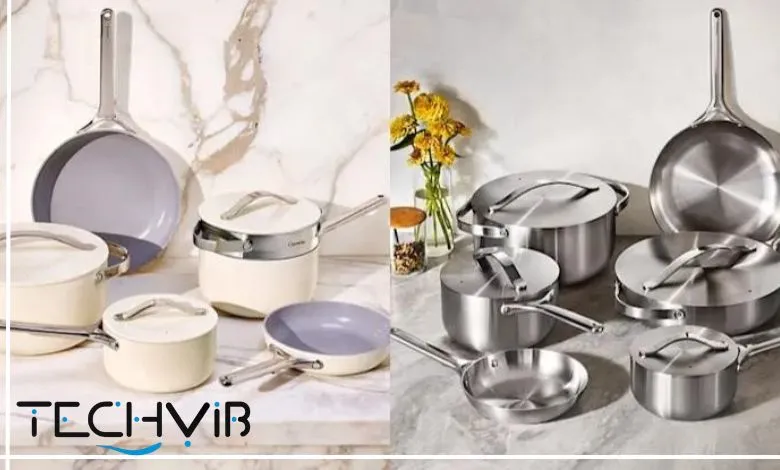
Verdict: Which Is Better Ceramic or Stainless Steel Cookware?
Neither material claims absolute superiority, as the ideal choice varies with individual preferences and cooking styles. Explore the following sections to compare specifics and determine what suits you best.
Is Ceramic Cookware Better Than Stainless Steel
Ceramic cookware often outperforms in scenarios where minimal oil is desired, thanks to its smooth surface that releases food effortlessly. It provides uniform heating that prevents uneven cooking in delicate dishes. This makes it ideal for everyday tasks like preparing vegetables or light proteins. However, it falls short in high-heat applications where searing is essential. Stainless steel thrives in those demanding situations by maintaining its structure under extreme temperatures. Both materials eliminate concerns associated with traditional chemical coatings.
Ceramic tends to be more lightweight, enhancing maneuverability during use. Stainless steel demands more practice to achieve non-stick results without added fats. Over time, the ceramic may show wear from regular handling. Stainless steel preserves its form through extensive cycles.
Research highlights ceramics’ role in promoting reduced calorie intake via oil-free methods. Stainless steel enables advanced culinary methods like creating rich pan sauces. For those starting, check our guide on the best cookware sets for beginners. Discussions often revolve around ceramic pans vs stainless steel for beginner-friendly options.
Difference Between Ceramic and Stainless Steel Cookware
Ceramic cookware typically involves a mineral-based coating applied over a metal base for enhanced release properties. Stainless steel relies on an alloy composition that emphasizes resilience without additional layers. Ceramic excels in steady warmth across the cooking area to avoid inconsistencies. Stainless steel often incorporates conductive cores for efficient energy transfer. Ceramic versus stainless steel cookware highlights how ceramic performs optimally within moderate thermal ranges to protect its integrity.
Stainless steel accommodates broader temperature extremes suitable for diverse recipes. Ceramic offers aesthetic variety through colored finishes that brighten spaces. Stainless steel presents a timeless polished appearance that fits professional environments. Ceramic requires careful treatment to maintain its protective surface over time. Stainless steel tolerates more vigorous interactions without compromising function.
Ceramic encourages the preparation of meals with fewer added fats for nutritional benefits. Stainless steel facilitates techniques that build depth in flavors through residue utilization.
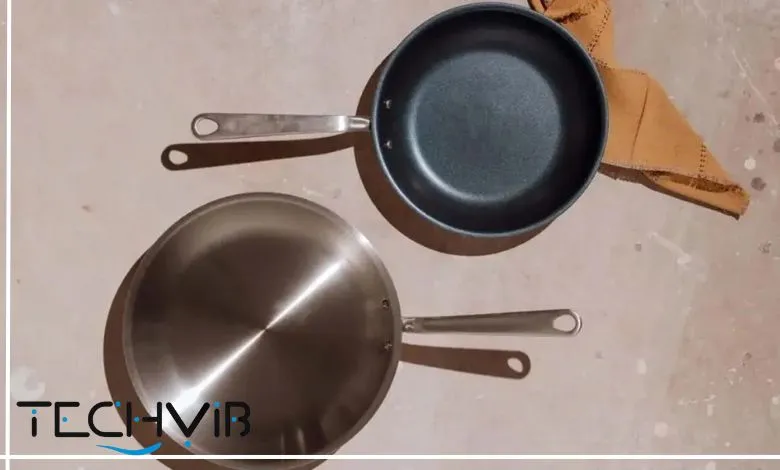
What Is Stainless Steel Cookware?
Stainless steel cookware emerges from a fusion of iron, chromium, and other metals designed for corrosion resistance. This combination creates a sturdy product that withstands daily demands effectively. Producers frequently integrate additional elements to optimize performance in various settings. For instance, an inner layer of aluminum enhances thermal conductivity across the piece.
The exterior maintains a tough barrier against physical impacts. If you’re equipping a new space, explore the Best Cookware Sets for First Apartments for practical options. Comparisons like stainless vs ceramic cookware often emphasize stainless steel’s robustness.
Originally developed for industrial applications requiring endurance, this material transitioned into household use for its dependable qualities. It shapes into pots and skillets that retain form even under pressure. Compatibility extends to multiple heat sources, including modern induction systems. Cooks value how it imparts no unwanted tastes to ingredients during preparation.
Stainless Steel Pans Pros & Cons
✓Handles elevated temperatures without deformation or loss of shape.
✓Endures for many years when maintained appropriately in regular use.
✓Adapts seamlessly to both stovetop and oven environments for flexibility.
✓Achieves balanced warmth in models with multi-layered construction.
✓Supports recycling processes at the conclusion of its utility period.
✗Necessitates fats to minimize food adhesion during cooking sessions.
✗Carries more weight compared to lighter material options available.
✗May release small metal quantities into acidic preparations.
✗Develops surface marks or color changes with prolonged exposure.
Why Do People Love Stainless Steel Cookware?
Enthusiasts appreciate stainless steel for its capacity to produce crisp exteriors on meats through effective searing. It generates flavorful bases that elevate sauces and reductions in recipes. The ability to retain warmth ensures meals stay hot for extended periods after removal from the heat. In active households, it manages repeated sessions without performance dips. Consistency shines across different stovetops, from gas to electric.
Evaluations demonstrate its reliability during extended simmering processes. It accommodates methods like slow-cooking meats to tenderness. Over sessions, the interior develops a seasoned layer that improves outcomes. Integration with utensils and accessories occurs smoothly. Ultimately, it replicates restaurant-quality results in personal spaces. For those with limited space, consider Cookware Sets for Small Apartments. Many prefer stainless steel pans vs ceramic for such versatility.
Is Stainless Steel Cookware Safe?
Stainless steel presents minimal hazards under standard operating conditions. Small portions of nickel and chromium can migrate into meals, particularly with new items. These quantities generally fall well within acceptable safety margins. Ingredients with higher acidity slightly elevate this transfer rate. Investigations reveal no notable adverse effects from routine contact. The composition remains stable across common cooking ranges.
Initial uses help form a barrier that limits further release. Oversight agencies endorse its application in food handling. When focusing on wellness, look into the best cookware set for health. Questions about ceramic pot vs stainless steel safety arise frequently in health discussions.
Is Stainless Steel Cookware Eco-Friendly?
The creation of stainless steel involves substantial resources, yet yields products with extended service lives. This longevity reduces the need for frequent acquisitions and disposals. Efficient reclamation methods recover a high percentage of components for reuse.
Advances in fabrication have lowered associated emissions over recent years. It contributes to waste reduction by outlasting disposable alternatives. Practices centered on durability align with broader environmental goals. Eco-conscious users debate ceramic vs stainless steel pots and pans for sustainability.
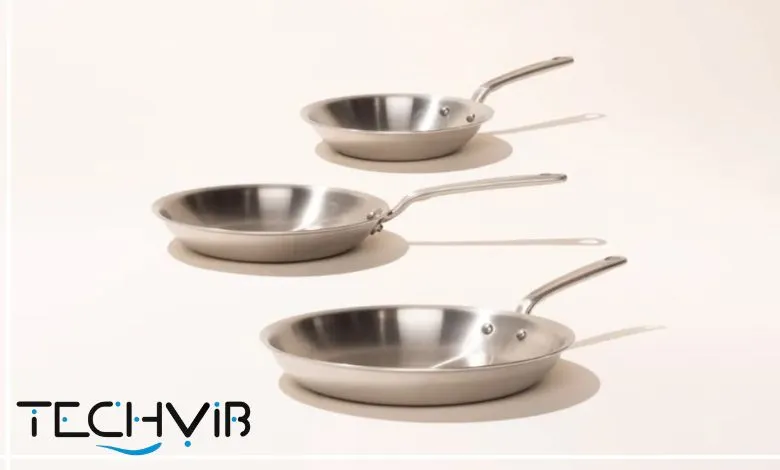
What Is Ceramic Cookware?
Ceramic cookware incorporates coatings sourced from natural silicates fused onto supportive structures like aluminum. This process yields a resilient, glossy finish that aids in food detachment. High-temperature baking solidifies the bond for enhanced stability. For daily routines, see our recommendations on the best cookware set for everyday use. The core difference between ceramic and stainless steel cookware lies in their base materials.
Some variants rely solely on fired clay without metallic foundations. These draw from traditional pottery techniques refined for contemporary needs. The outcome produces vessels that interact neutrally with contents. Innovations in formulations boost adaptability to modern lifestyles. They meet the requirements of varied meal preparations.
Ceramic Cookware Pros and Cons
✓Facilitates food separation with reduced reliance on oils.
✓Simplifies post-use washing through straightforward approaches.
✓Delivers consistent thermal spread for reliable outcomes.
✓Comes in diverse shades to match personal styles.
✓Tolerates oven conditions up to certain limits.
✓Limits potential chemical interactions in preparations.
✗Surface diminishes from contact with rough implements.
✗Restricts usage to milder thermal settings.
Susceptible to breaks along perimeters.
✗Exhibits reduced longevity relative to metallic counterparts.
✗Risks of contaminants in substandard productions.
Why Do People Love Ceramic Cookware?
Home cooks favor ceramic for its seamless food glide that streamlines meal assembly. It handles morning staples like eggs with minimal effort. Residue removal takes mere moments, freeing time for other activities. Analyses indicate it lowers fat incorporation in various dishes. Alignment with wellness-oriented eating patterns adds appeal. Design options enhance visual harmony in storage areas.
It treats sensitive ingredients with care to preserve textures. Feedback notes improved taste retention in finished products. Compatibility with advanced heating elements proceeds without issues. If you’re avoiding chemicals, explore the best cookware non toxic. Enthusiasts often cite ceramic vs steel cookware for its user-friendly appeal.
Is Ceramic Cookware Safe?
Ceramic avoids artificial additives in its formulation for a cleaner profile. Well-crafted glazes block heavy metal migration into dishes. Examinations affirm negligible risks in reputable selections. Stability holds firm below designated heat thresholds. Compliance testing upholds established boundaries.
It accommodates those with particular sensitivities effectively. For baking needs, consider the best non-toxic bakeware. Safety comparisons in cookware stainless steel vs ceramic favor ceramic for certain users.
Is Ceramic Cookware Eco-Friendly?
Ceramic draws from abundant earth elements in its base composition. Durability influences how often replacements occur in households. Bases allow for material recovery at the lifecycle end. Production emphasizes efficiency to curb excess outputs.
Lack of enduring toxins benefits surrounding ecosystems. It fosters habits that minimize single-use dependencies. Environmental reviews of stainless steel pots vs ceramic highlight recycling potentials.
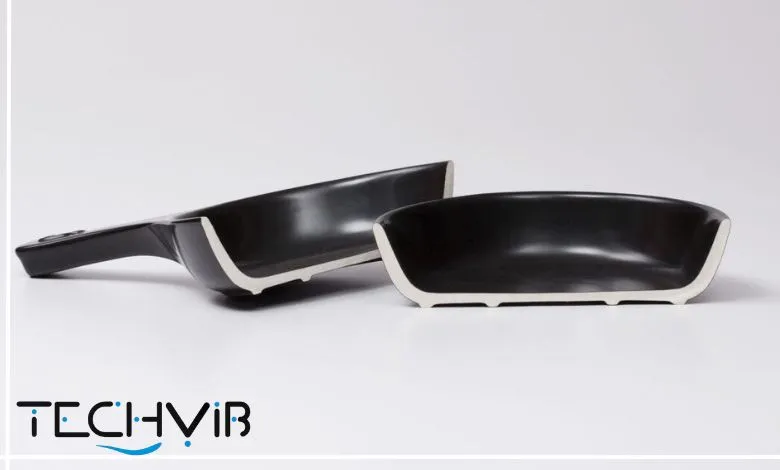
Health and Safety: What Science Says
Investigations into stainless steel focus on element transfer during use. Nickel and chromium appear in trace forms under normal circumstances. Such occurrences pose no substantial threats to well-being. Elevated acidity in foods prompts minor increases without exceeding limits. For ceramics, assessments target potential impurities like lead. Certified versions demonstrate the absence of these concerns.
Neither links to serious health conditions in standard applications. Data from prolonged studies reinforce their viability. Both prevent vapor emissions at typical operational levels. Learn more about ceramic vs stainless steel health before purchasing.
Stainless Steel vs Ceramic Cookware: Side-by-Side Test
Practical assessments reveal how each performs in common tasks like egg preparation. Review the detailed evaluations below to see real differences.
Ceramic Pan Egg Test
Tests comparing stainless steel vs ceramic pots and pans show varied results in egg cooking. In evaluations, the surface warmed gradually on moderate settings before introducing eggs without lubricants. Whites coagulated uniformly without patches of overdoneness.
Thermal flow covered the entire bottom evenly for balanced results. Warmth lingered sufficiently to keep the contents palatable briefly after. Descent to ambient conditions happened swiftly within a few minutes. Inherent slickness permitted simple maneuvers like turning.
Trials with poached or sunny-side varieties left no traces behind. Exposure to cleaning cycles preserved the exterior intact. Outcomes consistently delivered desirable consistencies across attempts. For affordable options, check the Best Nonstick Cookware Sets for $100.
Further trials involved whisked mixtures that blended without clumping issues. The atmosphere remained clear of excess vapors throughout. Assorted items mirrored positive behaviors in handling. Even spread thwarted localized scorching effectively.
Sustained heat assisted in timely presentation. Rapid temperature drop halted further cooking promptly. Slick attributes proved reliable in all instances. Compatibility with automated washers upheld structural soundness.
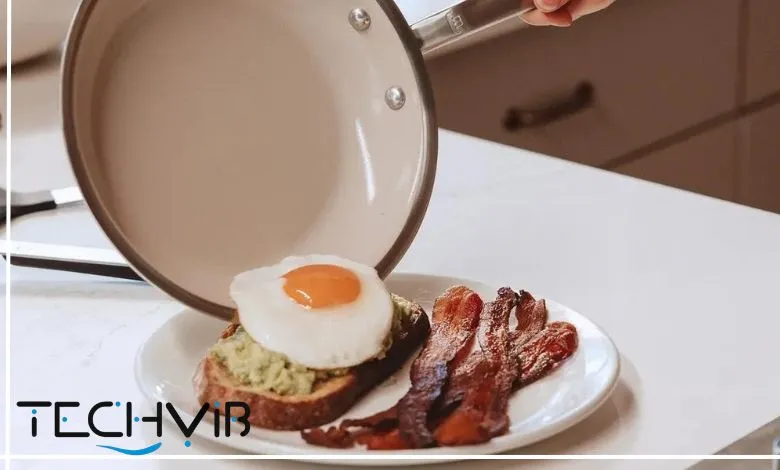
Stainless Steel Pan Egg Test
Practical evaluations of ceramic or stainless steel cookware reveal stainless steel’s learning curve. Initial heating reached higher points before applying a thin oil layer for preparation. Eggs adhered if the introduction timing deviated from optimal. Flow depended on internal layering for uniformity. Warmth persisted longer, aiding in residual cooking phases. Return to cooler states extended beyond several minutes. Achieving release required honed skills in management.
Over-easy styles detached once borders firmed up. Cleaning rounds restored a gleaming finish. Proficiency led to enhanced performances over repetitions. Those with bigger households might like the Best Cookware Sets for Large Families.
For agitated forms, ongoing motion proved essential to avoid clusters. Minimal moisture escaped in the process. Alternative proteins responded more favorably than oval ones. Spread corrected minor variances in application and prolonged hold supported secondary warmings. Gradual cooling allowed for controlled resting periods. Release and nonstick features improved through strategic pre-warming. Washer use contributed to maintaining luster.
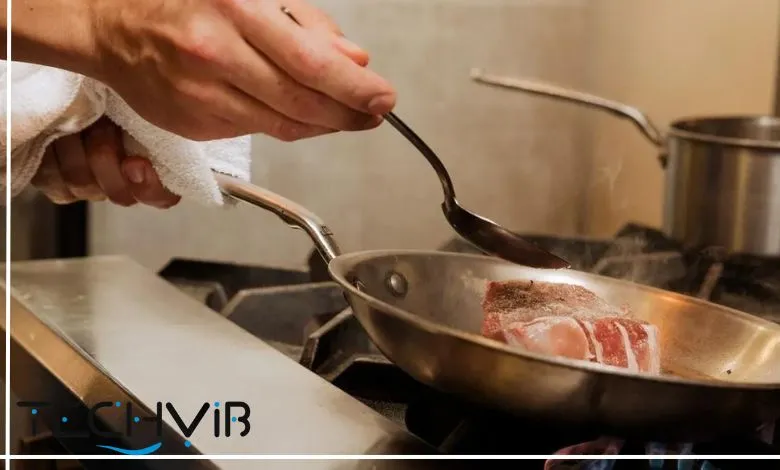
How Long Does Ceramic Cookware Last Compared to Stainless Steel?
Ceramic typically serves effectively for one to five years in typical household scenarios. Consistent application gradually erodes the functional layer over months. Attentive practices can push this toward the upper end of the spectrum. User reports indicate non-stick decline around the two-year mark in frequent use.
Stainless steel, conversely, spans multiple decades without notable degradation. Heirloom pieces transfer across family lines intact. Observations confirm sustained capability through extensive periods. Both gain from steering clear of abusive conditions. For durable choices, see the best cookware to last a lifetime. Longevity in ceramic vs stainless steel health discussions favors stainless steel.
Variables such as tool selection affect ceramics more prominently than their counterparts. Stainless withstands collisions with greater fortitude while the intensity of utilization accelerates the ceramic’s endpoint. Stainless continues delivering indefinitely under care. Collective experiences validate these temporal differences.
Does Stainless Steel Cookware Ever Wear Out?
Stainless steel seldom reaches complete obsolescence due to its robust nature. The blend resists breakdown from environmental factors over indefinite spans. Minor abrasions impact only aesthetics, not core utility and analyses underscore its capacity for countless iterations with upkeep. Users’ question is ceramic or stainless steel better based on wear? The answer is that it surpasses most competitors in endurance.
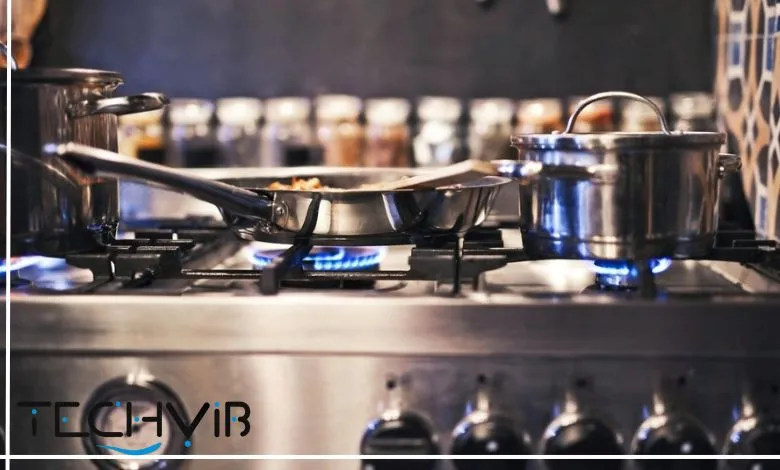
Maintenance Tips: How to Make Your Ceramic Pans Last Longer
Adhering to these guidelines extends the usability of ceramic pieces significantly.
Gentle Cleaning Methods
Employ mild detergents paired with non-abrasive cloths for routine upkeep. Address spills immediately under temperate flows to prevent buildup. Steer clear of aggressive agents that compromise the finish. Consider the best nonstick cookware for similar care tips. Tips for nonstick vs stainless steel vs ceramic include gentle methods.
Proper Heat Levels
Is ceramic better than stainless steel in terms of heat management? Initiate at subdued intensities and escalate gradually as needed. This approach safeguards against sudden expansions that strain materials. Optimal ranges preserve the essential properties intact.
Suitable Utensils
Select implements from flexible polymers or natural fibers for interaction as the utensil choice affects which is better ceramic or stainless steel cookware. These choices minimize surface disruptions effectively. Harsher metals accelerate deterioration noticeably.
Storage Practices
Incorporate separators when layering items to avoid contact damage. Suspension options reduce stacking pressures where feasible. Such measures protect against unintended impacts. For organization, look at the Best Stackable Cookware Sets for Small Kitchens.
Avoid Thermal Shocks
Permit gradual cooling before immersion in liquids. Abrupt shifts induce fractures in sensitive coatings. Ambient adjustments facilitate smoother transitions. Avoiding shocks is key in choosing whether stainless steel or ceramic is better for cooking.
Regular Inspections
Regularly inspect for irregularities to identify issues early. Promptly remove any compromised units to preserve the quality of the entire set. Maintaining this vigilance ensures sustained optimal performance.
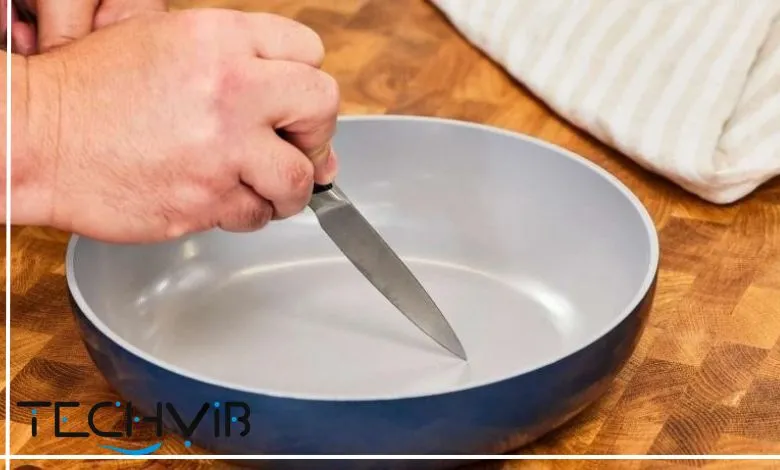
Comparing Stainless vs Ceramic Cookware
These two options fulfill kitchen roles differently based on key attributes. Delve into the comparisons below for nuanced insights.
Durability
Ceramic manages standard operations but succumbs to impacts that cause fractures. Its outer application fades with cumulative exposures over seasons. Stainless repels deformations and maintains composure through challenges. It sustains integrity across prolonged timelines without faltering. For high-temperature needs, explore a cookware set for high heat. Durability in a ceramic frying pan vs stainless steel favors stainless steel.
Drop tests reveal the ceramic’s susceptibility to breakage upon impact, while stainless steel withstands similar forces with ease. Ceramic performs best under gentler conditions, whereas stainless steel robustly endures rigorous demands.
Non-Stick
Ceramic delivers immediate detachment capabilities from the outset. Ingredients navigate the plane with ease during processes. Stainless calls for lubricants to replicate this behavior. Mastery refines its efficacy progressively. Non-stick properties drive ceramic versus stainless steel preferences.
Ceramic consistently excels in reduced-fat formulations, maintaining simplicity especially in the early stages. Stainless steel adapts and improves with regular use, benefiting from careful preparation. Check the best ceramic cookware for top picks.
Price
Is stainless steel better than ceramic when determining the price factor? Acquisition costs vary based on construction standards and features, with options ranging from economical to upscale in both categories. Stainless steel offers greater long-term value due to its extended durability. For value, see the best budget cookware set.
Convenience
What is better: stainless steel or ceramic pots and pans in terms of convenience? Ceramic speeds up routine preparations with rapid readiness and adapts quickly to adjustments for efficient workflows. Stainless steel requires preliminary warming to achieve optimal performance and transitions smoothly into baking modes.
Ceramic is well-suited for time-constrained schedules, offering effective performance. Stainless steel handles intricate compositions with ease. Ceramic helps novices build confidence, while stainless steel compensates for expertise with its versatile capabilities.
Clean-up
Ceramic eliminates residues with minimal effort after each session, as deposits easily come off with basic rinsing. Stainless steel may sometimes require soaking to remove stubborn elements. Moderate effort effectively restores its clarity. For easy maintenance, consider the Best Dishwasher Safe Cookware Sets. Clean-up in ceramic vs nonstick vs stainless steel varies by type.
Ceramic speeds up after-meal cleanup noticeably, resisting buildup proactively. Stainless steel, on the other hand, achieves a polished finish through targeted cleaning and consistently restores its vibrancy.
Safety
Ceramic minimizes additive transfer when intact, interacting harmlessly with food during use. Stainless steel rarely releases trace particles and both materials meet regulatory safety standards. Choosing between ceramic and stainless steel for cooking ultimately depends on the intended application.
Pure ceramic completely avoids metallic inclusions, while stainless steel incorporates composites within safe limits. Ceramic excels at meeting specific tolerances, whereas stainless steel performs reliably for general purposes. Learn about Tefal cookware safety in related reads.
Weight
Weight differences in non-stick vs ceramic vs stainless steel affect handling. Ceramic’s lighter weight enables effortless transport and allows it to glide smoothly across surfaces. In contrast, stainless steel provides a solid, anchored feel that maintains stability during vigorous movements, offering balanced control.
Ceramic makes lifting and positioning easier, simplifying organization tasks, while stainless steel ensures stability in dynamic environments and enhances precision in handling. See Top Induction Cookware Sets – Lightweight Picks for balance.
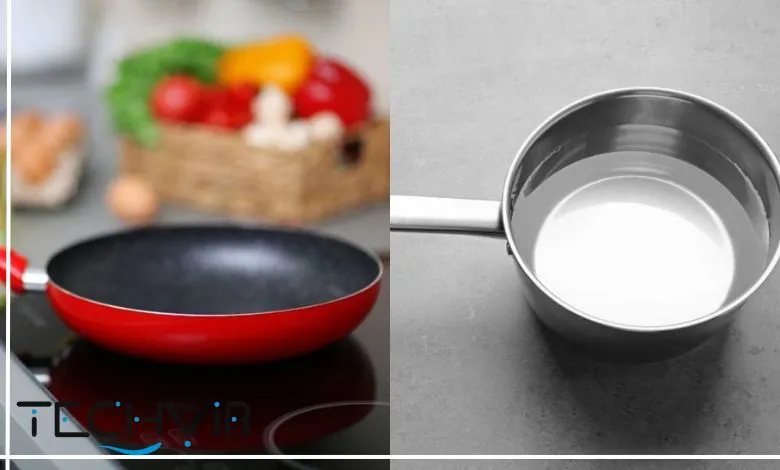
Would I Purchase Ceramic Pans Again?
Certainly, given their contribution to streamlined daily cooking experiences. They infuse enjoyment into routine tasks through simplicity. Nutritional advantages counterbalance occasional limitations. The return on commitment manifests in consistent satisfaction. Repurchase decisions often question stainless steel vs ceramic iron.
Ceramic Frying Pan vs Stainless Steel
Ceramic frying pans heat up quickly, making them ideal for light tasks like cooking eggs and effortlessly releasing food without extra oil. Stainless steel pans, meanwhile, excel at deep caramelization of proteins, developing uniquely complex flavors. Ceramic handles delicate produce with gentle precision, while stainless steel performs best in reductions and emulsions.
Ceramic requires less scrubbing afterward, whereas stainless steel withstands the wear of intensive cooking sessions. Lightweight ceramic offers greater comfort during use, while stainless steel retains heat longer for serving. For specific tools, check the best induction omelette pan.
Ideal Pan Situation Is:
Ideal uses of ceramic nonstick vs stainless steel vary by scenario. The ideal situation for ceramic pans is when lightweight design, easy cleanup, and gentle handling are priorities, particularly in environments that favor quick heating and delicate food care, while stainless steel pans are best suited for scenarios requiring durability, resistance to wear, excellent heat retention, and stable handling during rigorous cooking. Explore ceramic cookware for versatile ideas. Combining both pans covers a wide range of cooking needs. Ceramic handles quick, delicate tasks, while stainless steel excels with more robust cooking demands. Together, they maximize efficiency throughout meal preparation.
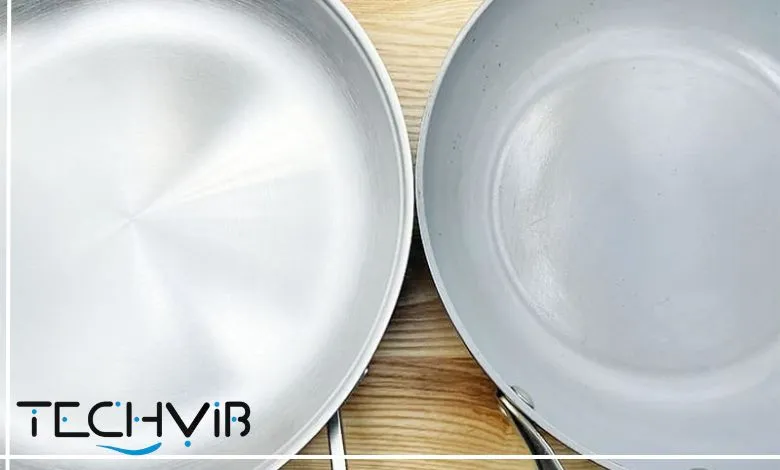
Is Ceramic Cookware Really Non-Toxic?
Ceramic is derived from elemental compounds such as silicon derivatives, with reputable versions excluding harmful substances like lead or cadmium. Tests confirm no harmful releases occur during normal use. The ceramic layer bonds securely to underlying materials and resists degradation even in acidic environments.
Strict standards regulate residual elements, and empirical evidence supports its neutral, safe behavior. When properly controlled, hazards remain minimal, making ceramics safer than many earlier synthetic alternatives. For affordable safe options, see the Best Nonstick Cookware Sets for $100 or Less. Toxicity in ceramic-coated cookware vs stainless steel is minimal if certified.
Does Stainless Steel Cookware Leach Metals into Food?
Stainless steel allows minimal diffusion of nickel and chromium, which decreases significantly with use. Most leaching occurs during initial exposures and tapers off over time, with acidic substances slightly accelerating the process. Measured amounts are considered harmless, posing no significant risk during everyday cooking. The material stabilizes quickly in practical use, and health authorities endorse its safety. As a result, concerns about leaching in ceramic-coated versus stainless steel cookware remain low.
Which Is Safer for High-Heat Cooking: Ceramic vs Stainless Steel Pots and Pans?
Stainless steel withstands high heat levels without structural damage, avoiding surface failures often seen in coated alternatives. Ceramic is best suited for moderate temperatures to maintain its integrity, as exceeding these limits risks coating damage. Stainless steel confidently supports intense browning, while ceramic is ideal for gentler cooking methods like boiling or steaming.
Research strongly favors stainless steel for rigorous cooking tasks, as it effectively minimizes concerns about emissions. For intense cooking, consider the Best Cookware Sets for Gas Stoves.
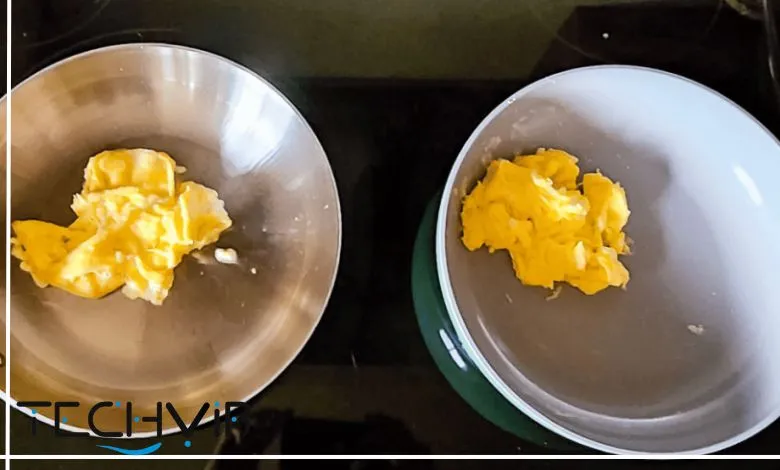
Ceramic vs Stainless Steel Cookware: Comparison Table
| Features | Ceramic | Stainless Steel |
| Non-Stick | Strong at the start | Needs assistance |
| Durability | Moderate span | Extended period |
| Heat Tolerance | Intermediate | Advanced |
| Weight | Reduced | Substantial |
| Safety | Minimal risks if quality | Trace safe releases |
| Echo Impact | Frequent changes | High recyclability |
Ceramic vs Teflon vs Stainless Steel vs Cast Iron vs Non Stick (Comparison Table)
| Features | Ceramic | Teflon | Stainless Steel | Cast Iron | Non-stick |
| Durability | Average | Limited | Superior | Robust | Below average |
| Non-stick | Reliable early | Superior initial | Conditional | Minimal | Peak |
| Heat Tolerance | Balanced | Restricted | Elevated | Strong | Constrained |
| Weight | Minimal | Slight | Noticeable | Intense | Nominal |
| Safety | High certified | Emission potential | Elevated | Element transfer | Additive hazard |
| Echo Impact | Neutral | Challenging | Positive | Favorable | Difficult |
| Dishwasher Safe | Yes, hand preferred | Yes, may wear | Yes | No | Yes, limited |
| Stovetop Compatibility | Most, check induction | Most | All types of cooktops | All types of cooktops | Most |
| Nontoxic | Yes if pure | Concerns if overheated | Yes | Yes | PFAS risks |
| Best Use | Every day low heat | Quick easy clean | Versatile pro | Searing baking | Beginner non-stick |
Do Professional Chefs Use Ceramic or Stainless Steel Pans?
In professional kitchens, stainless steel is favored for its precise thermal control and exceptional durability. It enables exact manipulation to achieve desired textures, such as crispness, and withstands the demands of high-volume cooking without compromise. Ceramic sees limited use in these intensive environments.
Stainless steel supports fundamental cooking techniques that build complex flavors and integrates seamlessly with diverse kitchen equipment. For pros, see the Best Cookware Sets Available.
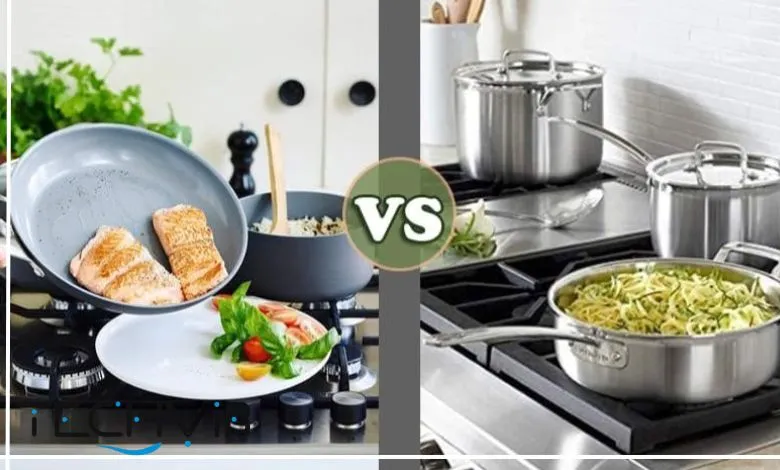
Can Ceramic Pans Handle High-Temperature Oven Cooking?
In the stainless steel vs ceramic-coated cookware comparison, ceramic pans safely withstand oven temperatures up to approximately 500 degrees Fahrenheit, maintaining structural integrity for reliable baking. Their supportive bases ensure even energy distribution throughout cooking cycles. Tests confirm consistent shape retention during extended uses, such as casseroles.
They handle layered dishes and proteins effectively, though exceeding recommended temperatures increases the risk of cracking. Preheating the oven before placing the pan promotes optimal performance, while the material’s thermal mass helps equalize temperatures for even results. For oven use, check the Best Cookware for Convection Microwave Ovens.
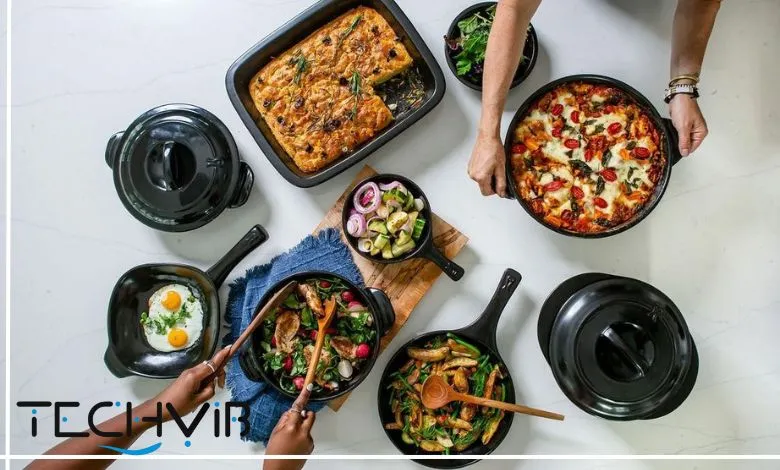
Which Do You Prefer: Ceramic vs Steel Cookware?
Ceramic makes home cooking easy and wellness-focused, ideal for simple, low-fat meals and quick cleanup. Stainless steel suits those needing precision, durability, and high-heat versatility for complex cooking. Choose ceramic for everyday, health-conscious use and compact kitchens; pick stainless steel for robust performance and larger spaces. Consider your habits, budget, and kitchen setup to decide. Preferences between ceramic vs stainless steel cookware ultimately depend on lifestyle.
Which is healthier, ceramic or stainless steel cookware?
Both are generally safe, but ceramic is often seen as healthier because it is non-reactive and free from metals or chemicals. Stainless steel is also safe but can leach small amounts of nickel or chromium if cooking highly acidic foods.
Which cookware is more durable, ceramic or stainless steel?
Stainless steel is more durable and long-lasting, as it resists scratching, chipping, and high heat. Ceramic can crack or wear down over time, especially with heavy use.
Which one is easier to clean, ceramic or stainless steel cookware?
Ceramic cookware is easier to clean because of its nonstick surface, requiring less scrubbing. Stainless steel may need soaking or extra effort, especially for stuck-on food.
Which cookware heats more evenly, ceramic or stainless steel?
Stainless steel with an aluminum or copper core heats more evenly and responds quickly to temperature changes. Ceramic heats more slowly but retains heat well once it reaches temperature.
Which is better for everyday cooking, ceramic or stainless steel?
Ceramic is better for low to medium-heat cooking and nonstick needs like eggs or delicate foods. Stainless steel is better for searing, browning, and high-heat cooking, making it more versatile for everyday use.
